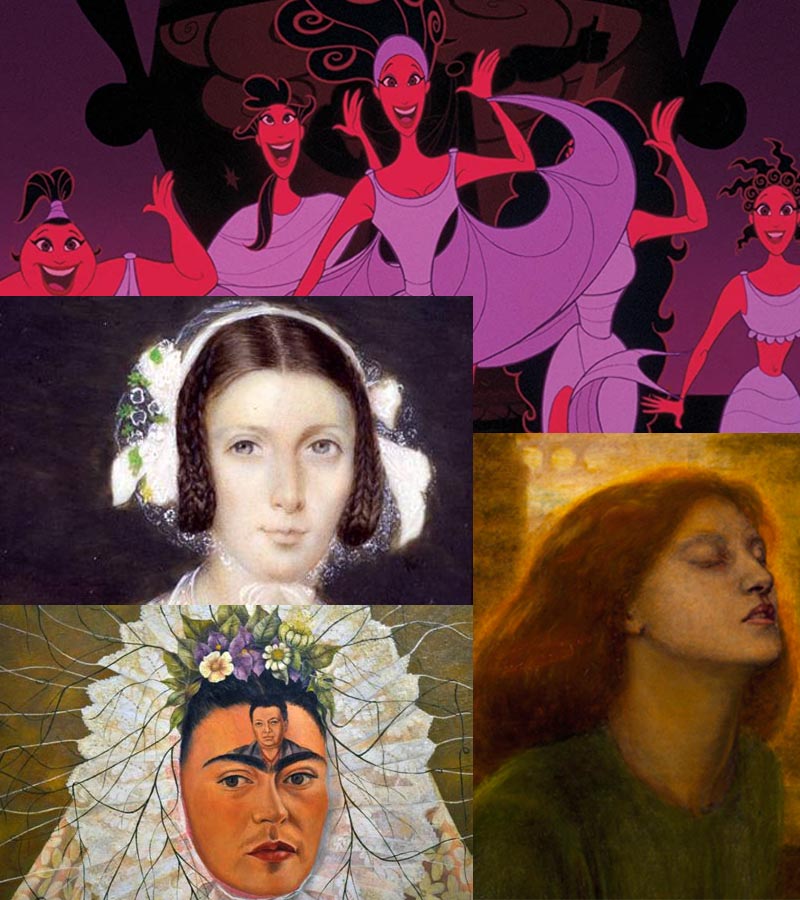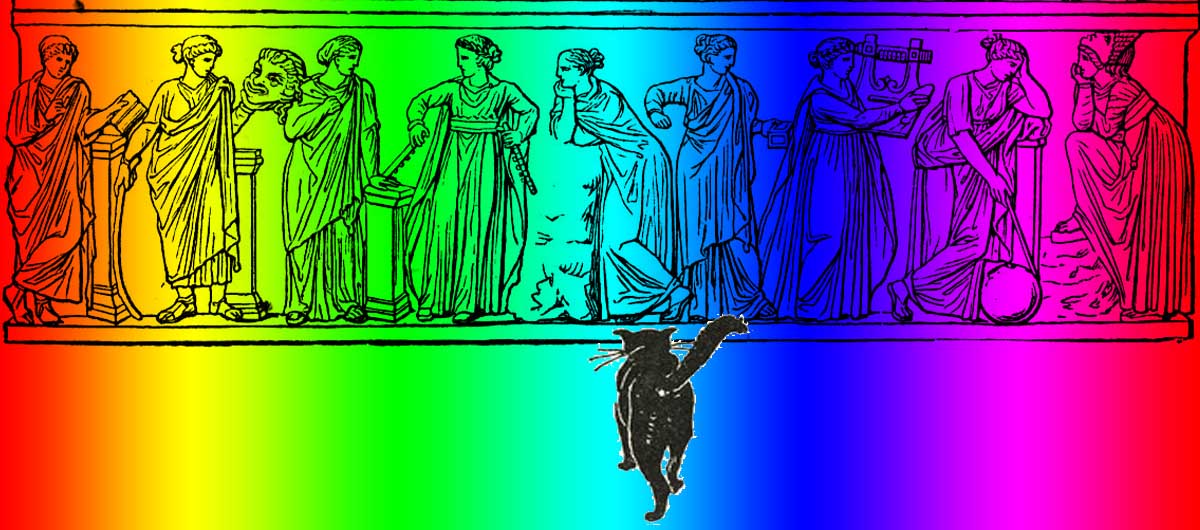Over on the website of Pens Around the World, every second week, we publish writing prompts as Pensives. Last week, one of the prompts my friend Debbie Hubbard gave us was about writers’ muses. She asked “Do you have a muse?“
My answer is, Yes, I do. Kind of.
Clio
Once upon a long ago, when I was still a schoolboy and first learned about the nine muses, my favourite subject was history. Historians have their own muse, Clio, so I adopted her.
I was being a bit pushy. Muses probably should be left alone to make their own choices, but I was young and eager and Clio and I have been linked together ever since.
The muses were the nine (or the three, depending) demi-goddesses of the Greek pantheon who personified the creative person’s daemon. In the days of Greece, and later of Roman civilisation, creative people were not seen as solely responsible for their creations. Whether they were writers or philosophers, dancers or actors, gardeners or craftworkers, they were seen as conduits for the creative force, and their daemons (or their geniuses in Roman times) were the inspirational fountains that poured through them.

Co-production
In other words, anything created was always a co-production. On the one hand there was the creator and on the other the inspiring force. It’s a way of seeing the two sides of creativity. The human creator has to work to acquire the skills of their craft, whether it’s the knowledge and ability to use the tools of carpentry, or the dexterity of fingers and the ear for tone necessary to the musician, or the familiarity with pen or keyboard and the command of language that every writer needs. Only once the skills are established can a creator hope to channel effectively the inspiration of their genius.
We don’t think so much about this nowadays. Ever since the Renaissance, we’ve tended to locate the genius in the artist as one person, one thing. And yet, perhaps in extremis, we can still think of something external to us, pouring through us, directing our creativity.
Elizabeth Gilbert (author of Eat, Pray, Love) expresses this idea better than I can in her TEDTalk about “Your Elusive Creative Genius”. She includes a couple of amusing examples of modern creatives locating their genius outside of themselves. Nick Cage, for example, refusing an enticing melody that comes to him as he’s driving. Asking his genius to, please, come back later when it’s more convenient.
Daemon voices
And perhaps the idea of an external genius is coming back. Certainly there is a new generation of readers who will be familiar with daemons after having read the novels of Philip Pullman.
Just at present I’m reading Pullman’s compelling collection of short essays “on stories and storytelling”, Daemon Voices. In his sequence of stories woven around Lyra his heroine and her daemon Pantalaimon, Pullman creates a world similar to our own in which everybody has a daemon. Your daemon is an aspect of yourself which has a physical existence outside you, in the form of an animal. Your daemon is often, but not always, of the opposite sex to you, to your body; and when you are a child, it can change shape. In adolescence it loses the power to change, and acquires one fixed animal form which it will keep for the rest of your life. (p31)
Of course, there is another long tradition (mostly among poets and artists) of locating their muse in another, physical person. From Dante’s Beatrice to John Keats’ Fanny Brawne; from the British Pre-Raphaelite painters’ Elizabeth Siddal (herself no mean artist) to the mutual muse of Frida Kahlo for Diego Rivera and Diego for Frida.

The nine muses
Among the Greeks, whose sprawling pantheon was never really codified, the muses were in some places and times identified with certain locations, certain temples – Mount Helicon, the Temple of Delphi. At other times they were brought to Europe from Aethiopia. Or they were the nine daughters of Memory and their father was Zeus. Or Apollo. (And when the Disney company got its hands on them, they were rationalised into five.)
The nine are often the ones we see depicted in sculptures from ancient Greece and Rome. They have names and, like Catholic saints, attributes. Things they carry that help identify them. Terpsichore the muse of dance carries a lyre, while Thalia, muse of comedy, holds a comic mask.
Clio carries a book or a scroll, though I can’t say I’ve ever seen her do so around me. In fact the more I try to see her, the more she takes on an aspect of one of Pullman’s daemons. I think of her as a cat. Very probably The Cat That Walked by Herself.
Unreliable Clio
As a muse she’s not very reliable. She comes around from time to time to cozy up and maybe get served a saucer of milk. But she can get along perfectly well without me and obviously expects me to get along without her. I don’t feel this is the right arrangement, but it’s what I’ve got. Perhaps it’s my own fault for trying to annex her in the first place, or perhaps it’s because I don’t put in all the work would-be creative writers need to, to make themselves fitting vessels for their muse. But after all this time we do seem stuck with one another. My Clio is fixed in her form and we both have to live with that.
And what about your muse? Is it a physical person? A disembodied voice in the corner of the room? A Pullman-esque daemon? Or is your genius located inside yourself?
The above was my contribution to the Pens Around the World website as a piece of Bi-weekly Wisdom. The blog posts we publish between writing prompts.





